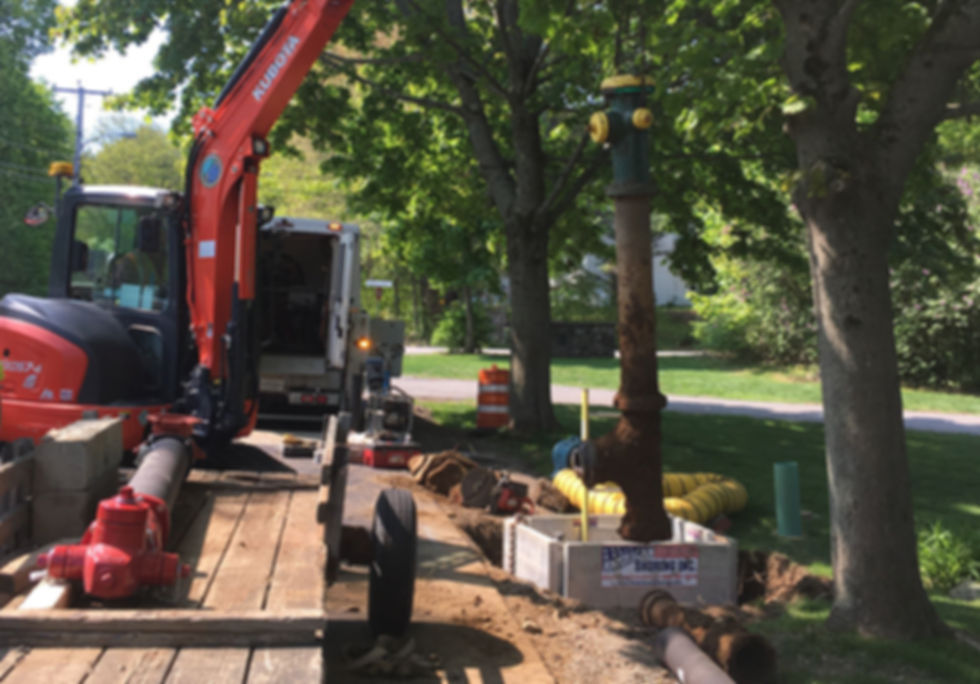FOR FIRE DEPARTMENTS
Fire departments please note:
All the York Water District and Kittery Water District hydrants are “Open Left."
All of Kennebunk, Kennebunkport & Wells Water District hydrants are "Open Right."
Whenever a hydrant is being operated it must be opened and closed very very slowly. If a hydrant is operated incorrectly, it could cause a Water Hammer. This is a pressure surge or wave resulting when a fluid in motion is forced to stop or change direction suddenly (momentum change). A Water Hammer commonly occurs when a valve is opened or closed suddenly in a pipe system, and a pressure wave propagates in the pipe. This pressure wave can cause major problems, from noise and vibration to pipe collapse. It is possible to reduce the effects of the water hammer by operating fire hydrants slowly.
It is recommended to open a fire hydrant at a rate of one turn every four seconds.
Hydrant Usage Rule of Thumb:
Contact YWD anytime the fire department is dispatched to a fire scene or when a hydrant has been utilized for training purposes. Our trained staff can be reached 24/7 by calling 207-363-2265 and leaving a message. Someone will arrive within 30 minutes.
The District will lend assistance where appropriate.
When closing a fire hydrant, close it very slowly!
Do not use excessive force, or “reef” a hydrant shut. Close it only tight enough to stop to flow to remove your equipment. A YWD crew member will always inspect the hydrant to confirm it has been shut off without any dripping.
District will also pump all hydrants after use. Year Round!
In addition to notifying the District by phone at the time of any hydrant usage, the Fire Department staff is also responsible for completing a hydrant usage report (noting estimated water usage for each hydrant used) for each event and submitting it electronically to the District’s Foremen (Webster Ropke, Larry Graham and Tom Chase) within 7 days.
Fire Departments shall also submit a year-end summary of fire hydrant usage to the District’s Foremen, detailing the number of hydrants used for training/fire suppression and total calculations for water used throughout the year.
Hydrant Nut Operating Colors:
What do different colors mean?
Red Nut: 0 - 500 GPM*
Orange Nut: 500 - 999 GPM
Green Nut: 1000 – 1499 GPM
Blue Nut: 1500+ GPM
*GPM=Gallons Per Minute
Typical Hydrant Installation:
See a typical fire hydrant installation here (PDF opens in new tab).
Dead End Water Mains:
The limitation with "dead end" mains is that they are only supplied with water from one end. In such instances, fire companies pumping "upstream" from other companies can impact water supply to their "downstream" counterparts. Your engine companies should be made aware of the situation and coordinate appropriately to ensure the available water is adequately shared.Dead end mains don't just exist on dead end streets. Many roads which extend into different sections of town will have slightly different pressure and volume due to elevation changes.


